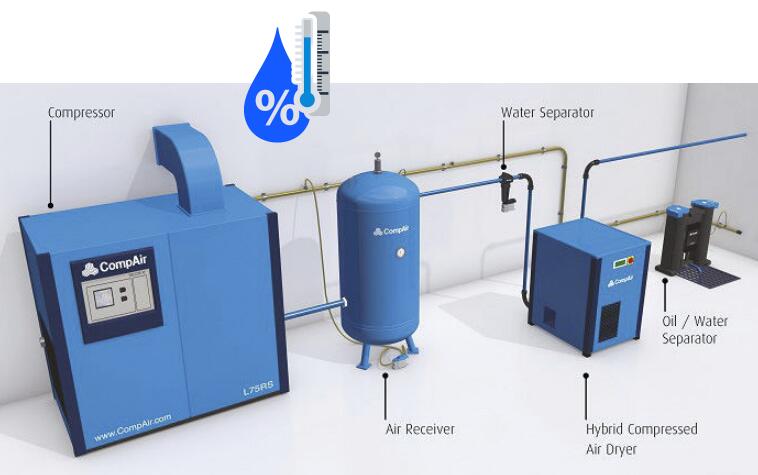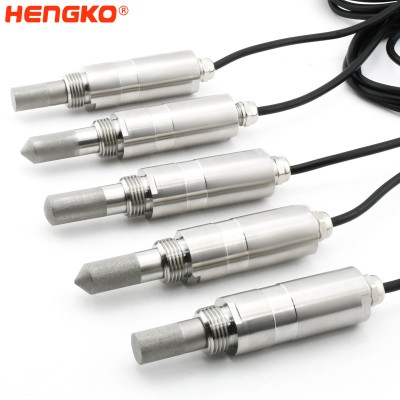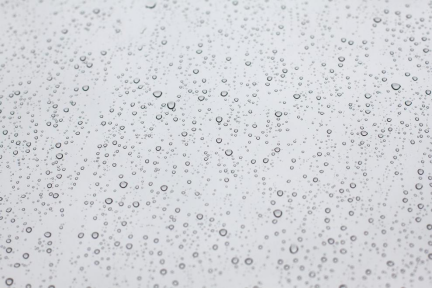Why Need Measure Dew Point & Pressure for Compressed Air Measurement ?

Why Should Measure Dew Point & Pressure for Compressed Air Measurement ?
Measuring dew point and pressure in compressed air systems is crucial for several reasons related to system performance, equipment integrity, and product quality. Compressed air is widely used in various industries for tasks such as powering pneumatic tools, controlling processes, and providing breathing air. Here's why measuring dew point and pressure is essential in this context:
1. Moisture Control:
Compressed air contains moisture vapor, which can condense into liquid water when the air temperature drops. This can lead to problems such as corrosion, equipment malfunction, and contamination of end products. By measuring the dew point, which is the temperature at which condensation occurs, you can ensure that the air remains dry enough to prevent these issues.
2. Equipment Longevity:
Moisture in compressed air can cause internal corrosion in pipes, valves, and other components of the compressed air system. This corrosion can weaken the components and reduce their operational lifespan. Measuring the dew point helps maintain dry air conditions and prolongs the life of the equipment.
3. Product Quality:
In industries where compressed air comes into direct contact with products, such as in food and pharmaceutical manufacturing, the quality of the compressed air is crucial to prevent contamination. Moisture in the air can introduce unwanted particles and microorganisms into the process, potentially compromising the quality and safety of the end products.
4. Energy Efficiency:
Compressed air systems are often energy-intensive. Moist air requires more energy to compress than dry air, leading to higher energy consumption. By maintaining dry air conditions, you can improve the efficiency of the compressed air system and reduce energy costs.
5. Process Control:
Certain industrial processes are sensitive to variations in humidity. By measuring and controlling the dew point of the compressed air, you can ensure consistent process conditions and reliable outcomes.
6. Instrument Accuracy:
Many instruments and control systems that use compressed air as a reference or as part of their operation require the air to be at a specific pressure and dew point. Accurate measurement and control of these parameters are necessary to maintain the precision and reliability of these instruments.
7. Safety Concerns:
In applications where compressed air is used for breathing air supply, ensuring the dew point and pressure are within acceptable limits is crucial for the health and safety of personnel. High humidity levels can lead to discomfort, reduced respiratory function, and potential health risks.
8. Regulatory Compliance:
Some industries, such as pharmaceuticals and medical devices, have stringent regulatory requirements for compressed air quality. Measuring and documenting dew point and pressure can help ensure compliance with these regulations.
In summary, measuring the dew point and pressure in compressed air systems is essential to maintain the integrity of equipment, ensure product quality, enhance energy efficiency, and adhere to safety and regulatory standards. It allows for better control over the compressed air system's performance and helps prevent costly downtime, repairs, and potential safety hazards.
Why is Compressed Air Wet ?
First We Need to Know What is Dew Point ?
The dew point is the temperature at which the air must be cooled to the point where the water vapor in it can condense into dew or frost. At any temperature,
the amount of water vapor that the air can hold is the maximum. This maximum amount is called the water vapor saturation pressure. Adding more water
vapor leads to condensation. Due to the nature of the gas and the way it is produced, untreated compressed air always contains contaminants.
The need for air treatment arises from three main characteristics of compressed air.
1. The main contaminants in compressed air are liquid water - water aerosols - and water vapour. Moisture measurement is essential to ensure the quality,
safety and efficiency of thousands of applications in a wide range of industries.
2. In many processes, water vapour is a serious contaminant that adversely affects the quality and integrity of the final product.
3. This is why dew point measurement is a specific category of humidity measurement and is the most commonly used parameter when avoiding
condensation or freezing.
How Are Contaminants Formed ?
As water is incompressible, when compressing air, the water content per m³ increases. However, the maximum water content per m³ of air at a given
temperature is limited. Air compression therefore increases the water vapour pressure and therefore the dew point. Always take this into account if you
vent the air to atmosphere before carrying out measurements. The dew point at the measurement point will be different from the dew point during the process.
What Problems Can Contaminants in the Compression Process Cause?
1. Blockages in pipes
2. Machinery breakdowns
3. Contamination
4. Freezing
Applications for dew point measurement range from medical breathing air and monitoring industrial dryers to monitoring the dew point of natural
gas to ensure it meets international quality standards. Dew point measurement with dew point transmitters is one of the most effective means of
ensuring the proper use of industrial equipment.

How Can You Measure Dew Point Reliably ?
1.Select an instrument with the correct measuring range.
2. Understand the pressure characteristics of the dew point instrument.
3. Install the sensor correctly: following structure from the manufacturer.
Do not install the dew point sensor at the end of stubs or "dead ends" pieces of pipe where there is no airflow.
HENGKO offers a wide range of high-precision dew point sensor, temperature and humidity transmitters, temperature and humidity calibrators
and other humidity temperature instruments for thousands of customers worldwide. Our range of dew point sensors are easy to install and maintain
and they measure relative humidity, temperature and dew point temperature. Typical applications include monitoring compressed air dryers, compressed
air systems, saving energy and protecting process equipment from water vapour corrosion, contamination. Offered with a sensor replacement programme
to minimise maintenance time, they are reliable and cost effective.
HENGKO can meet the high volume needs of O.E.M customers worldwide, supplying major industrial equipment manufacturers around the world.
In addition to standard products, our team of engineers can work with you to take your project from the design to the field stage, with one-stop
product and technical service support.
Also You Can Send Us Email Directly As Follow : ka@hengko.com
We Will Send Back With 24-Hours, Thanks for Your Patient !
Send your message to us:


